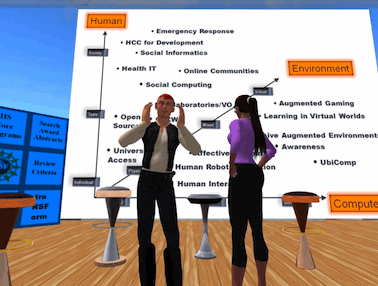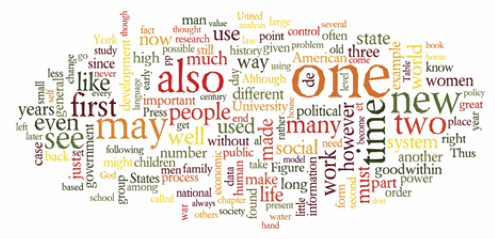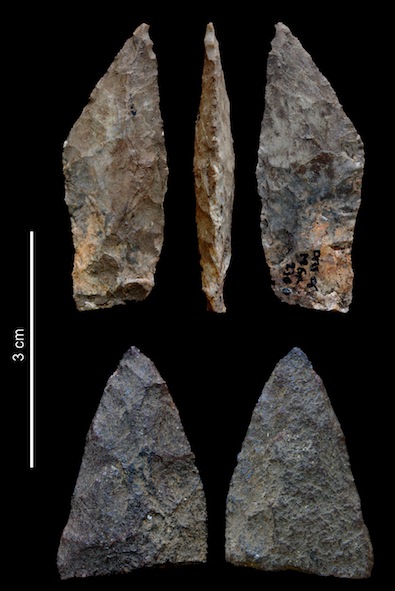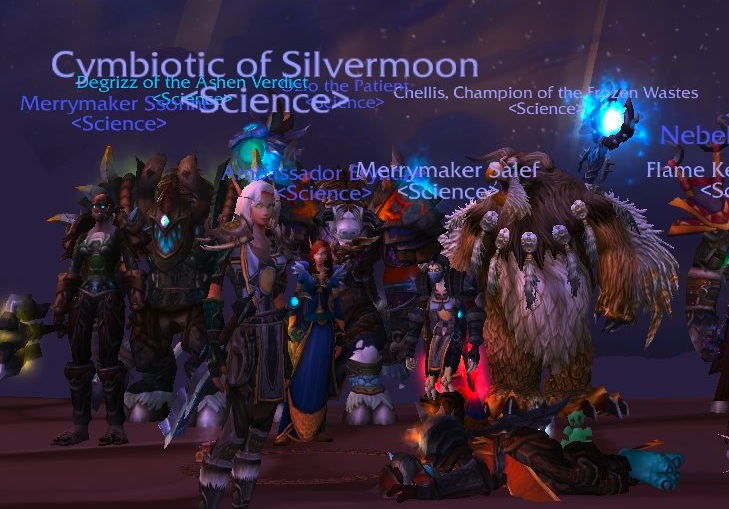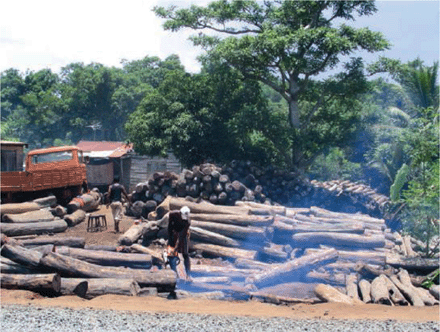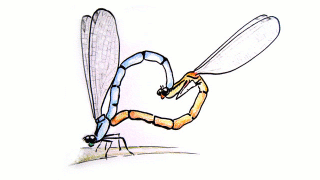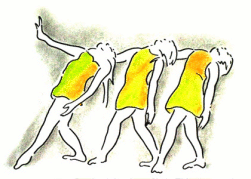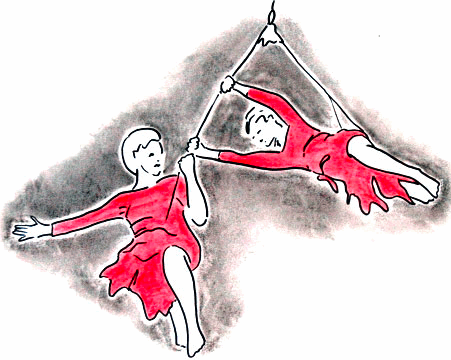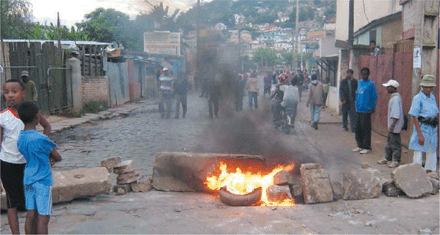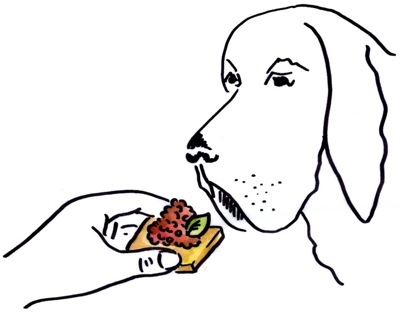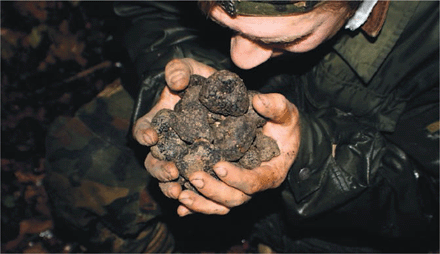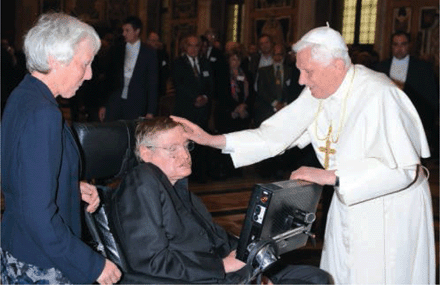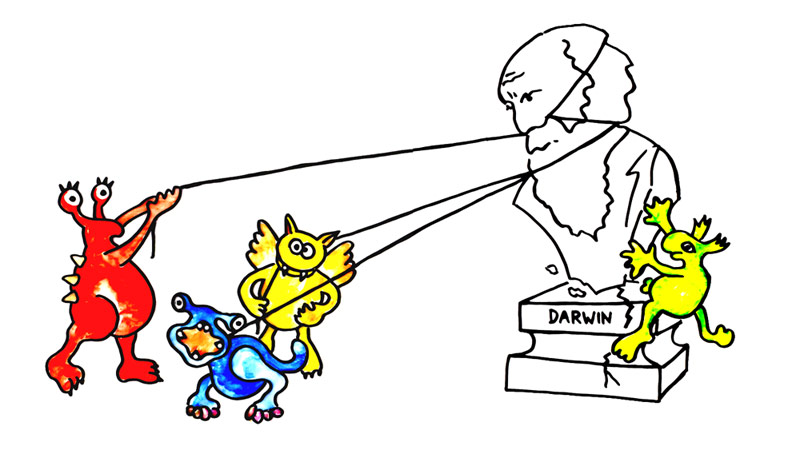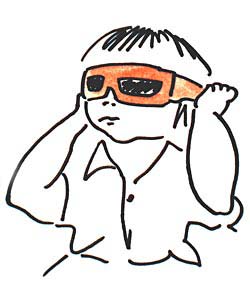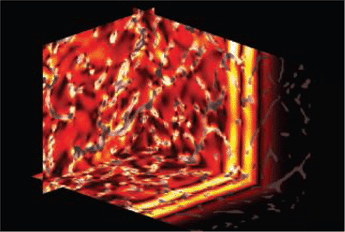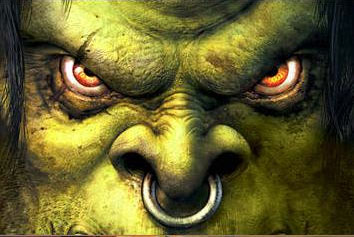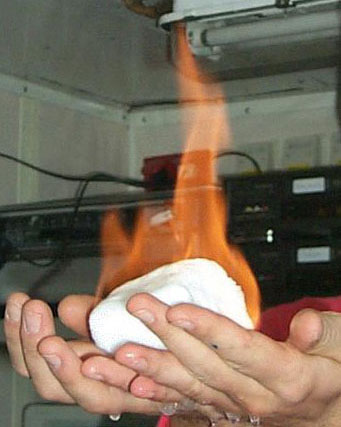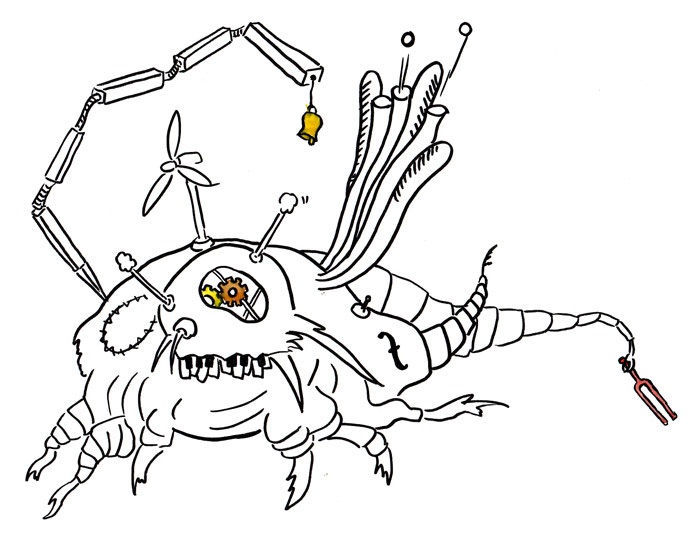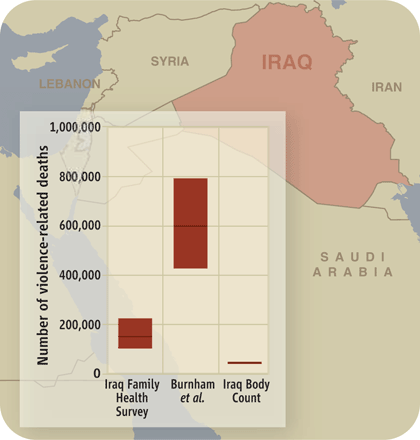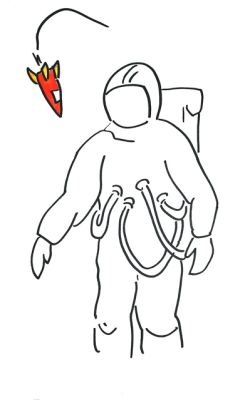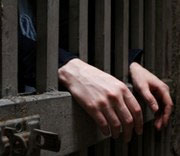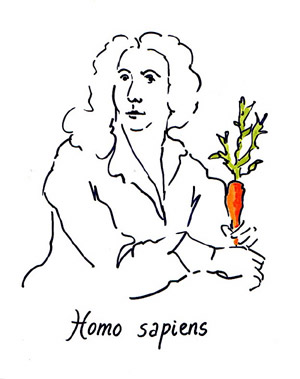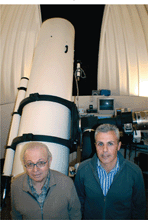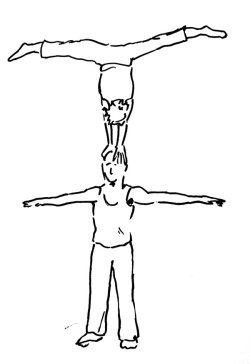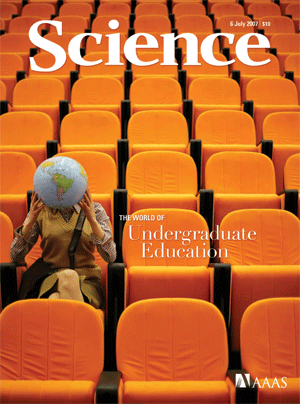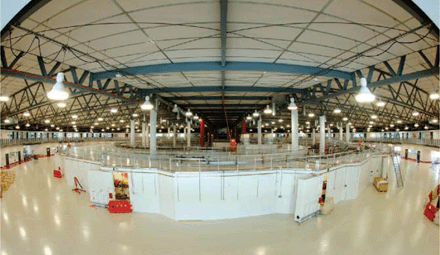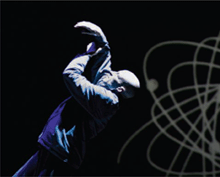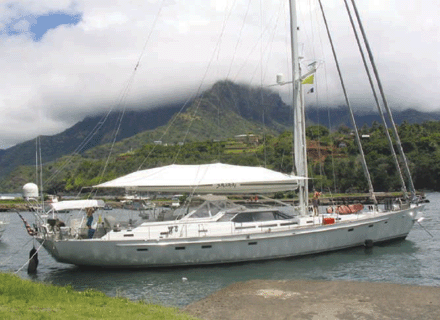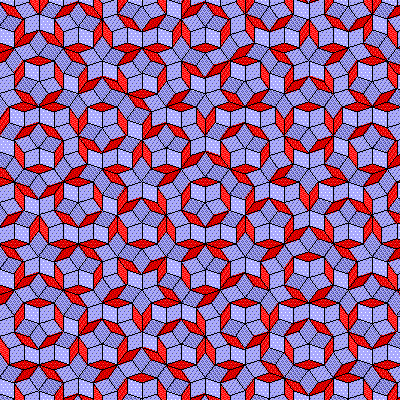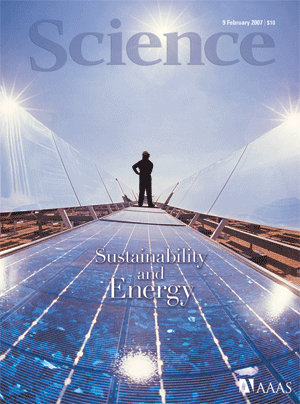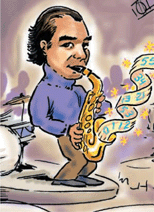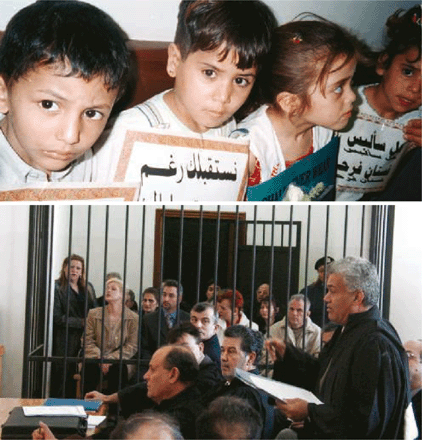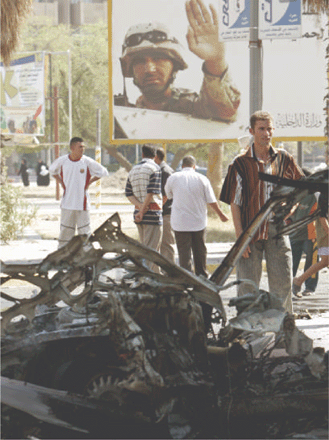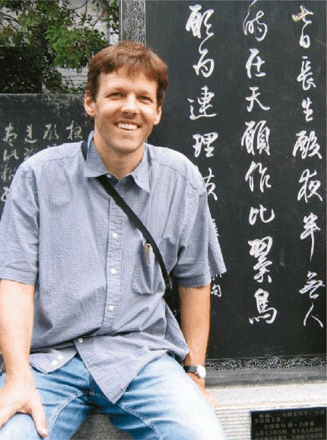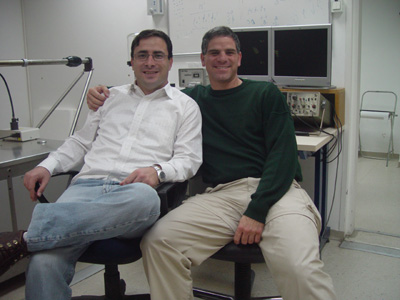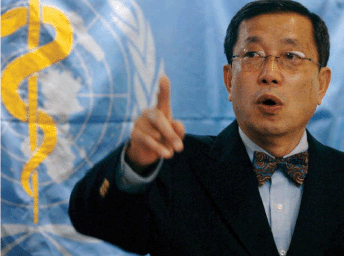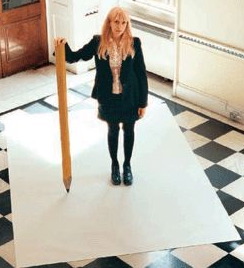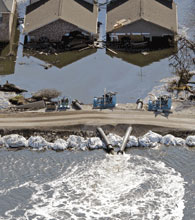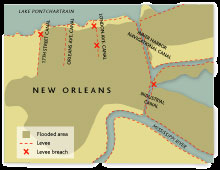Email contact: "John" at johnbohannon. org
| Most stories are online and free on the Science website | |||
| Here are PDF versions of my print stories that are behind a paywall: | |||
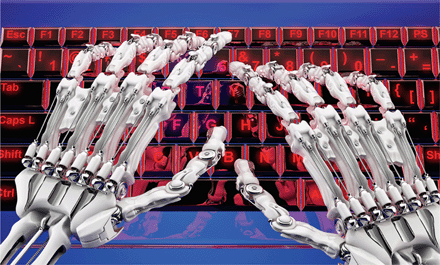 |
Hoax-detecting software spots fake papers John Bohannon Science 2 April 2015, p. 18 It all started as a prank in 2005. Three computer science Ph.D. students at the Massachusetts Institute of Technology--Jeremy Stribling, Max Krohn, and Dan Aguayo--created a program to generate nonsensical computer science research papers. The goal, says Stribling, now a software engineer in Palo Alto, California, was "to expose the lack of peer review at low-quality conferences that essentially scam researchers with publication and conference fees." Now an arms race is underway between publishers' fake paper-detecting programs and the fake paper generators that aim to evade them. |
||
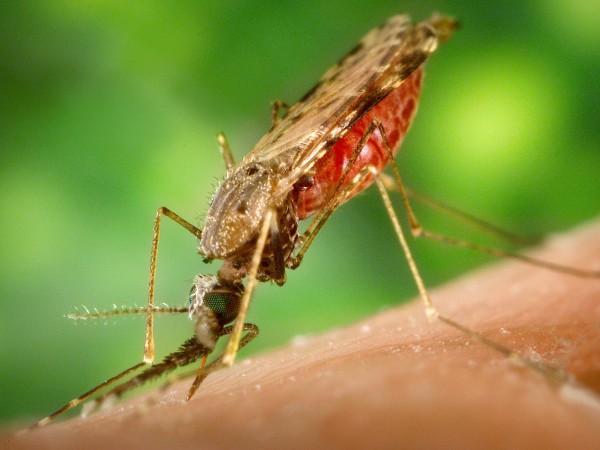 |
Gene drive method excites and scares John Bohannon Science 20 March 2015, p. 1300 In a study published online this week, researchers describe a technique for creating mutations that invade the genome and transmit themselves across to the next generation with near 100% success, defying the classic laws of Mendelian genetics. It is the latest--and some say, most impressive--example of gene drive: biasing inheritance to spread a gene rapidly through a population, or even an entire species. At this level of efficiency, a single mosquito equipped with a parasite-blocking (it blocks transmission, doesn't kill the parasites) gene could in theory spread malaria resistance through an entire breeding population in a single season. A collaboration is under way, based on this study, to do just that. |
||
 |
Unmasked John Bohannon Science 30 January 2015, p. 492-494 It's hard for a machine to pluck your face out of a crowd. If you appear in a photo taken at a protest march, an abortion clinic, or a gay bar, for example, your anonymity is safe--for the time being. Unless a computer has been tasked to look for you and it has already trained on dozens of photos of your face--and the quality of the images you appear in is excellent--there is little chance that it will spot you. Nor is it yet possible for a computer to search the Internet for all photos in which your face appears, unless you are named in captions. But within the walled garden of Facebook, which contains by far the largest collection of personal photographs in the world, the technology for universal facial recognition is beginning to blossom. |
||
 |
Credit card study blows holes in anonymity John Bohannon Science 30 January 2015, p. 468 For social scientists, the age of big data carries big promises: a chance to mine anonymized demographic, financial, medical, and other vast data sets in fine detail to learn how we lead our lives. For privacy advocates, however, the prospect is alarming. They worry that the people represented in such data may not stay anonymous for long. A study of credit card data in this week's issue of Science bears out those fears, showing that it takes only a tiny amount of personal information to de-anonymize people. The result, coming on top of earlier demonstrations that personal identities are easy to pry from "anonymized" data sets, indicates that such troves need new safeguards. Hope for big data social science may be on the way with a new technique for data protection, called differential privacy, which protects the identity of people in data while still allowing scientists to use the data for research. |
||
 |
Breach of trust John Bohannon Science 30 January 2015, p. 495-497 Each year, recruiters from the National Security Agency (NSA), said to be the largest employer of mathematicians in the United States, visit a few dozen universities across the country in search of new talent. It used to be an easy sell. The agency has long supported U.S. mathematics with education programs and research grants. But the recruiters' task has become more complicated since 2013 after former NSA contractor Edward Snowden began releasing documents revealing, among other things, that the agency has been harvesting e-mail and phone records from ordinary American citizens on a massive scale. NSA may also have purposefully compromised a mathematical standard used widely for securing personal computers the world over. U.S. mathematicians are conflicted over whether to cut ties with their secretive supporter. |
||
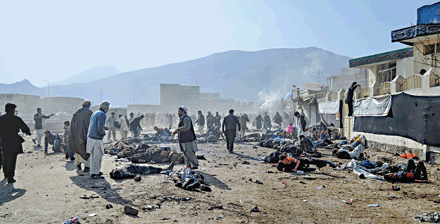 |
The rising toll John Bohannon Science 15 August 2014, p. 722-724 As troops head home from the war in Afghanistan, the longest in U.S. history, the growing death toll for Afghan civilians is coming into focus. Last year, the occupying military coalition--the International Security Assistance Force (ISAF)--recorded the highest number of civilian casualties since rigorous counting began. Those figures come from a previously undisclosed data set of the past 4 years of civilian casualties, drawn from reports from ISAF soldiers. This data set, which Science is making public today, is the first release of civilian casualty figures since 2011. |
||
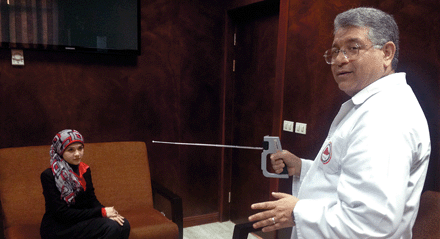 |
A challenge to pseudoscience John Bohannon Science 4 July 2014, p. 16 Earlier this year, Egypt's military announced a series of medical breakthroughs: a device that could detect a variety of viral infections without even touching a patient, and another device that clears a patient's blood of viruses. Treatment of Egyptian patients with the devices was due to begin 30 June. As Science went to press, the military had announced that treatment would be delayed until further experiments were complete. Whereas the Western scientific community has ridiculed the devices as pseudoscience, Egyptian academics have been largely silent. The country's military regime has been handing down harsh punishments for those with dissenting voices, most recently 7-year prison sentences for three journalists. But one Egyptian scientist, Islam Hussein, has been speaking out with videos in Arabic that have garnered hundreds of thousands of views on YouTube--a large number considering they are 80-minute PowerPoint presentations explaining the scientific problems with the miracle cures. Science interviewed Hussein about these "breakthrough" devices. |
||
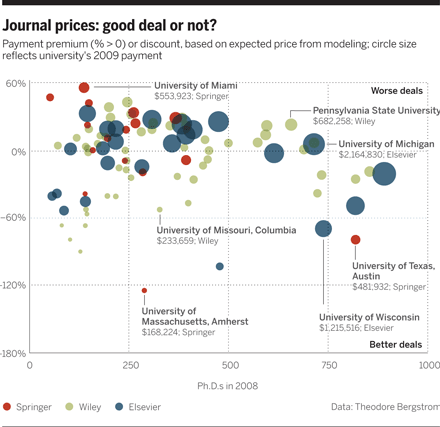 |
Secret bundles of profit John Bohannon Science 20 June 2014, p. 1332-1333 What is your university paying for academic journal subscriptions? The answer can be surprisingly hard to find. Universities buy access to most of their subscription journals through large bundled packages, much like home cable subscriptions that include hundreds of TV stations. But whereas cable TV providers largely stick to advertised prices, universities negotiate with academic publishing companies behind closed doors, and those deals usually come with nondisclosure agreements that keep the bundled prices secret. After several years of digging, and even legal action, a team of economists has pried out some of those numbers, revealing the bundle prices charged by Elsevier, Springer, and Wiley. Some universities are paying nearly twice what universities of seemingly similar size and research output pay for access to the very same journals. |
||
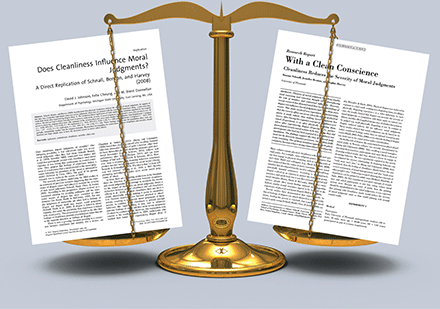 |
Replication effort provokes praise--and ‘bullying’ charges John Bohannon Science 23 May 2014, p. 788-789 This week, a global network of nearly 100 psychologists unveiled the results of their attempt to repeat 27 well-known psychology studies. In more than half of the cases, the replication was a partial or complete failure. Some are heralding the replications as a renaissance for the social sciences. But some on the receiving end of the replication are calling it an inquisition. |
||
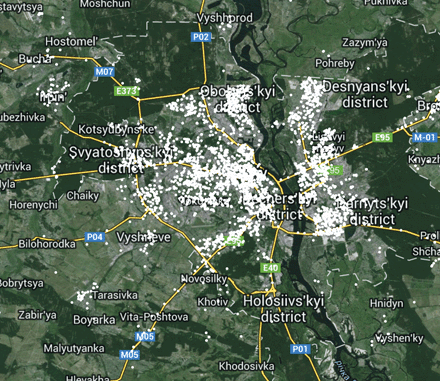 |
Twitter Offers Entire Data Pool, but Some Wary of Diving In John Bohannon Science 28 February 2014, p. 958 With the announcement of its new Data Grants program, Twitter is inviting academic researchers to propose experiments that take advantage of the full "firehose" of its 500 million daily tweets. But some researchers worry that the terms of the deal give Twitter ownership of their ideas. |
||
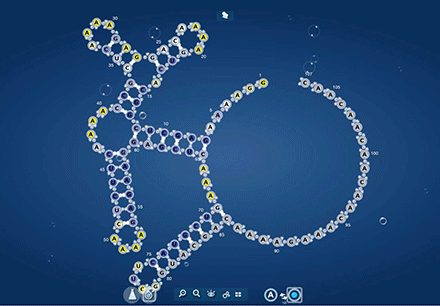 |
Online Video Game Plugs Players Into Remote-Controlled Biochemistry Lab John Bohannon Science 31 January 2014, p. 475 Crowdsourcing is the latest research rage--Kickstarter to raise funding, screen savers that number-crunch, and games to find patterns in data--but most efforts have been confined to the virtual lab of the Internet. In a new twist, researchers have now crowdsourced their experiments by connecting players of a video game to an actual biochemistry lab. The game, called EteRNA, allows players to remotely carry out real experiments to verify their predictions of how RNA molecules fold. The first big result: a study published this week in the Proceedings of the National Academy of Sciences, bearing the names of more than 37,000 authors--only 10 of them professional scientists. |
||
 |
Google Scholar Wins Raves--But Can It Be Trusted? John Bohannon Science 3 January 2014, p. 14 Google Scholar is picking up adherents in the scientific community. But the search service's ascendancy is not going unchallenged. |
||
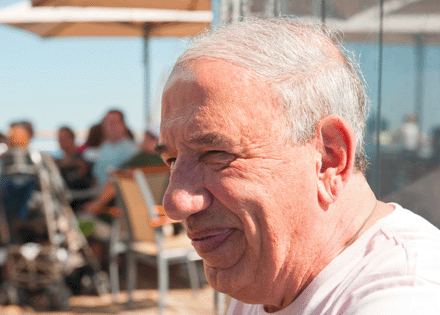 |
Grim Day for Turkish Science as Six Academics Get Long Prison Terms John Bohannon Science 9 August 2013, p. 603-604 The rift between Turkey's government and many of its scientists became a chasm this week when six academics were sentenced to between 10 and 23 years in prison for terrorism and related crimes. The verdicts are drawing condemnation from human rights organizations and academics worldwide. |
||
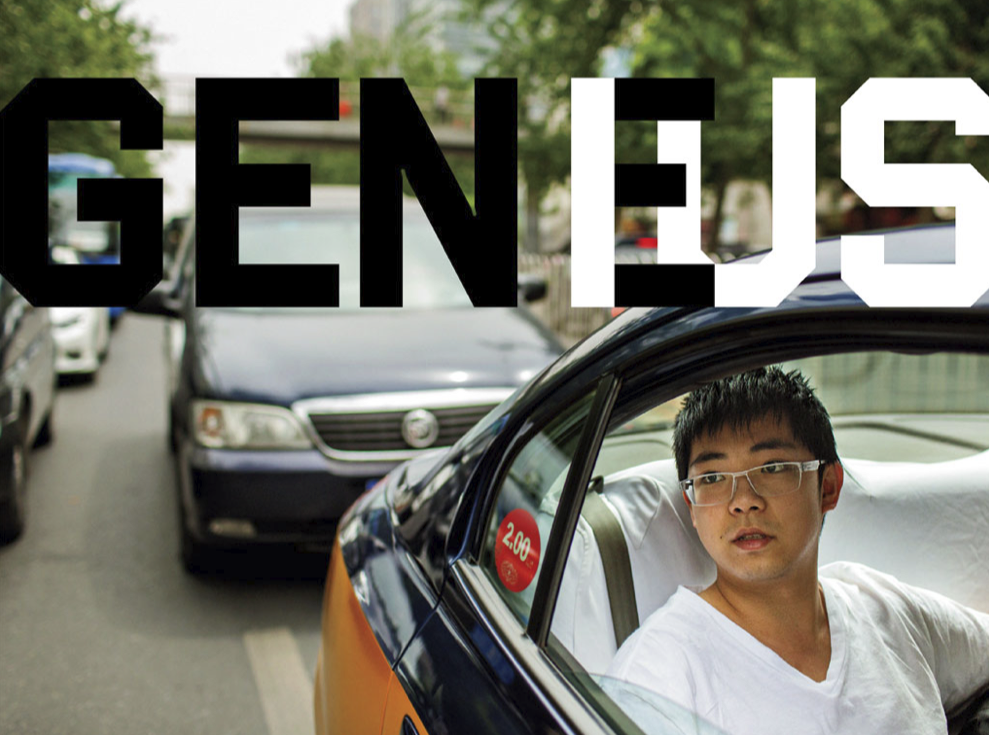 |
GENEIUS John Bohannon Wired 16 July 2013, p. 117-123 Zhao Bowen is leading a multimillion-dollar research effort to solve a genetic mystery: What makes some people so smart? And how can we make more of them? |
||
 |
Study Links Climate Change and Violence, Battle Ensues John Bohannon Science 2 August 2013, p. 444-445 In many cities, violence spikes with the temperature. Some social scientists say that the same could be true globally, proposing that climate change could lead to escalating violence. Now, a study published online this week in Science tries to quantify the increase. |
||
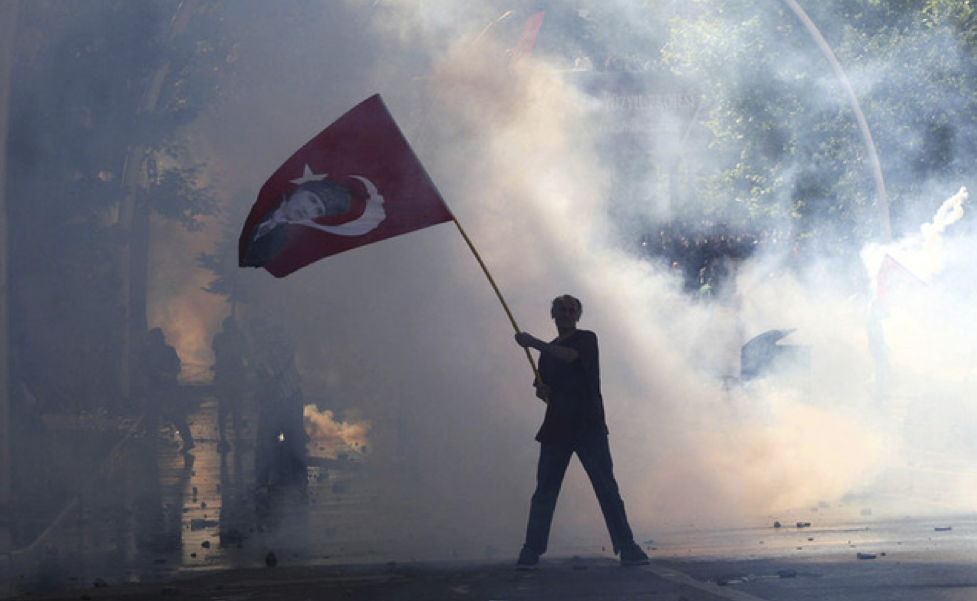 |
Scientists, Protests Morph Into Fight for Academic Freedom John Bohannon Science 26 July 2013, p. 332-333 Tensions between Turkey's mostly secular scientific community and the conservative Islamic government are intensifying, sending many academics and students to join the still simmering demonstrations. Yet science is at the heart of the government's ambitions, and the focus of its largesse. |
||
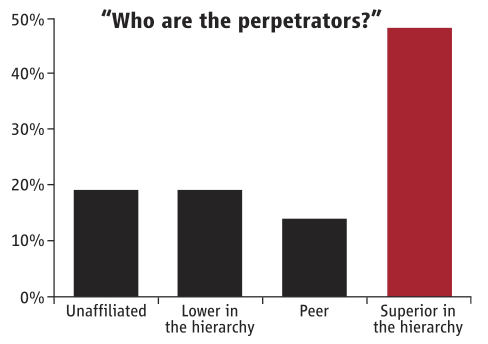 |
Survey of Peers in Fieldwork Highlights an Unspoken Risk John Bohannon Science 19 April 2013, p. 265 A bioanthropologist and her colleagues released troubling data at the annual meeting of the American Association of Physical Anthropologists from a survey of colleagues' fieldwork experiences. It revealed a high incidence of sexual harassment, with abuses ranging from subtle gender exclusion to sexual assault. The victims were mostly female, and the perpetrators were mostly senior researchers, sometimes the victim's own fieldwork mentor. |
||
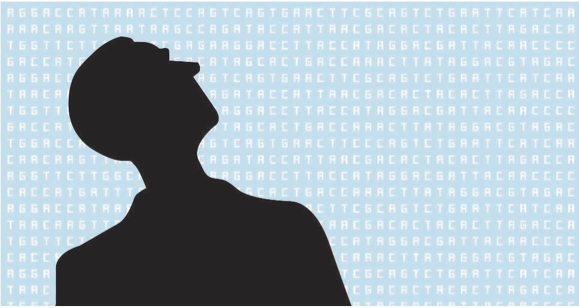 |
Genealogy Databases Enable Naming of Anonymous DNA Donors John Bohannon Science 18 January 2013, p. 262 By applying an algorithm to anonymized genomes from a research database and doing some online sleuthing with popular genealogy Web sites, researchers were able to guess the true identities of DNA donors. Privacy concerns have been raised about publicly accessible genome data before, and managers of a popular repository were aware of the risks posed, but few people had guessed how easy deanonymizing the data was. As genealogy databases and other resources improve, how can individuals be protected, and what are the implications? |
||
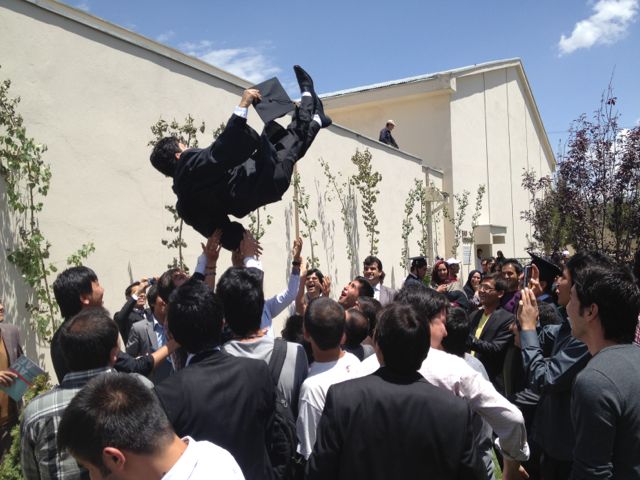 |
Can Afghan Universities Recover From War, Taliban, and Neglect? John Bohannon Science 10 August 2012, p. 639-641 KABUL--After 3 decades of war, Afghanistan desperately needs people with scientific and technical training. With the help of the United States and other countries, Afghan academics are beginning to pick up the pieces. But a deadline looms: International military forces are preparing to leave the country by the end of 2014, and it's anybody's guess what will happen after they are gone. |
||
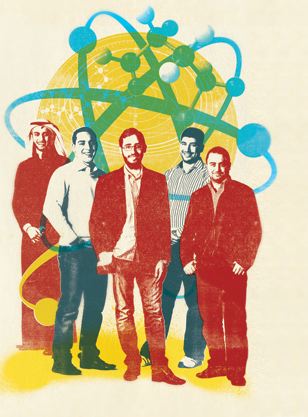 |
Cradle of Invention by John Bohannon Wired 20 January 2012 DOHA--An engineering reality show is a huge hit on Arab television. It takes young scientists from across the Arab world and gives them a shot at the American dream of becoming inventor-entrepreneurs. The only wrinkle: Some contestants may be arrested and tortured when they go home. |
||
 |
The Winners of the 2011 Dance Your PhD contest by John Bohannon Science 20 October 2011 This year's winning PhD dances were based on titanium chemistry, X-ray crystallography, pigeon behavior, and fruit fly sex. |
||
 |
Why Is Exercise Good for You? |
||
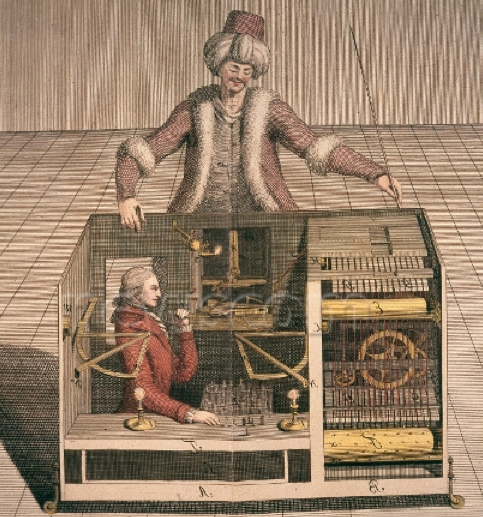 |
Social Science for Pennies |
||
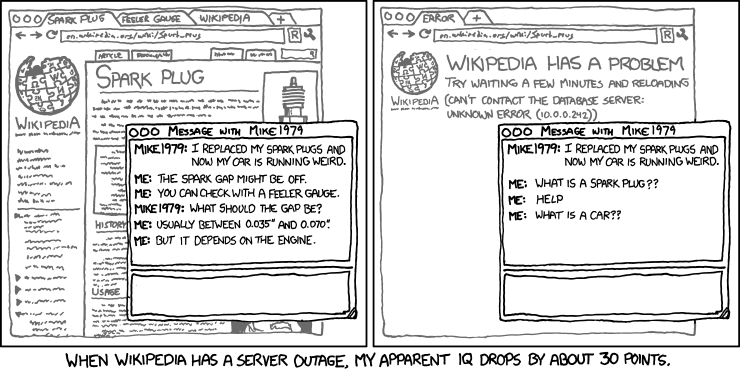 |
Searching for the Google Effect on People's Memory |
||
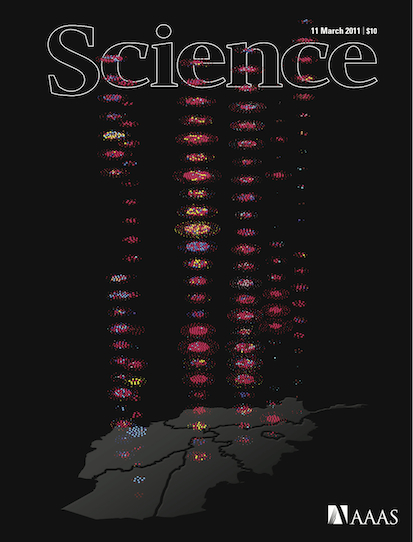 |
Counting the Dead in Afghanistan All of the data are publicly available here: |
||
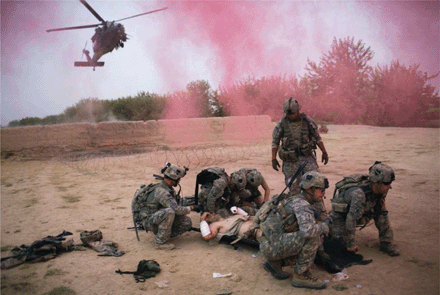 |
War as a Laboratory for Trauma Research John Bohannon Science 11 March 2011, p. 1261-1263 Medical researchers are being deployed onto the battlefield in Iraq and Afghanistan. IEDs are the number one risk, often combining burns, deep lacerations from shrapnel, and brain trauma from blast waves. Injuries like these are too rare to study in peacetime, creating a natural laboratory for trauma medicine. But war is also the most chaotic and stressful environment imaginable for doing science. |
||
The Science Hall of Fame |
|||
Google Books, Wikipedia, and the Future of Culturomics |
|||
Meeting for Peer Review at a Resort That's Virtually Free |
|||
The birth of culturomics |
|||
| Building a Parallel Universe John Bohannon Wired Magazine 29 November 2010 Scientists at Harvard want to create a cell that is a mirror image of normal life down to the molecular level. It could revolutionize medicine and industry. It could also kill us all by causing an ice age that reboots life on this planet. |
|||
Preserving African Cultural Heritage (Dakar): Archaeologists, or Activists? Latter-Day Livingstone Digs Along the Congo Early Dates For Diepkloof |
|||
Leaked Documents Provide Bonanza for Researchers The Pentagon is fuming after last week's release of a huge cache of classified Iraq War data by the organization WikiLeaks. But researchers struggling to build an accurate picture of the death toll in post-invasion Iraq are thrilled. Besides the number of casualties, the release includes geographic locations of the violence and other information that has not been available until now. |
|||
IEEE Conference on Computational Intelligence and Games (Copenhagen): Game-miners Grapple with Massive Data Smarts for Serious Games Killer Bots Are Getting Human |
|||
Linda Bartoshuk: A taste for controversy Linda Bartoshuk is famous for discovering "supertasters", those among us with far more taste buds than normal. Now she's using people's tongues as a Rosetta stone to find the "perfect tomato". |
|||
The Gonzo Scientist Galileo in Senegal Thought experiment: What if instead of being persecuted by the Inquisition, Galileo had been sent to distant lands as a missionary? Instead of bibles, he carried telescopes. What would that look like? We did the experiment. See the results for yourself. |
|||
| Telescopes for the People John Bohannon Science 15 April 2010, p. 296 The International Year of Astronomy 2009 has come and gone, and the Galileoscope project, one of the most ambitious parts of the global IYA campaign, was supposed to be wrapped up by now. The original goal was to put telescopes in the hands of the millions of people attending IYA events. But then the global financial crisis hit. The scientists on the team were forced to become instant entrepreneurs to keep the Galileoscope project alive. |
|||
| Madagascar's Forests Get a Reprieve—But for How Long? John Bohannon Science 2 April 2010, p. 23 - 25 Conservation biologists are cautiously celebrating a victory in the effort to pull Madagascar's unique biota back from the brink of extinction. Last week, after months of pressure from scientists, conservation groups, and foreign diplomats, Madagascar's military rulers announced a ban on the logging and exportation of rosewood, a commodity from a threatened ecosystem. Logging of rosewood was banned before but resumed after a military coup toppled Madagascar's science-friendly government a year ago and relaxed controls. By decree on 24 March, the military government reversed its decision of 6 months earlier. |
|||
| The Nile Delta's Sinking Future John Bohannon Science 19 March 2010, p. 1444 - 1447 As Egypt celebrates the 50th anniversary of the start of the construction of the Aswan High Dam, some scientists say that this wonder of engineering is contributing to an environmental catastrophe that could force millions of its citizens to abandon the lush, fertile delta. The worst of these is coastal erosion and subsidence, the compacting of the delta soil. For millennia, the untamed Nile compensated for these natural processes by delivering fresh sediments along with its fresh water. The dam, however, now blocks the sediments far upstream of Cairo. As a result, the delta is sinking. At the same time, the Mediterranean Sea is expected to rise as a result of global warming. |
|||
| African Physicists Set Their Sights on Mammoth Scope John Bohannon Science 22 January 2010, p. 400 A meeting last week in the Senegalese capital not only was the first physics conference spanning the continent but also became a rally for African science, including the establishment of a new African Physical Society. On the minds of many here was the Square Kilometre Array, a next-generation radio telescope that will probe gas clouds in the early universe with a collecting area 100 times that of the Very Large Array in Socorro, New Mexico. A lengthy site-selection process has already eliminated China and South America, leaving just Africa and Australia. |
|||
|
How Many Have Died Due to Congo's Fighting? Scientists Battle Over How to Estimate War-Related Deaths John Bohannon and John Travis ScienceInsider 21 January 2010 The battlefield for scientists fighting over how to best estimate war-related deaths has moved from Iraq to the Congo. Yesterday, a new report looking at the overall picture of wartime mortality offered new estimates of the number of people in the Democratic Republic of the Congo who had died due to the fighting there since 1998. The numbers are dramatically lower than the widely quoted 5.4 million figure issued by the International Rescue Committee (IRC). |
||
|
The Gonzo Scientist
Do Scientists Like Green Porno? The Gonzo Scientist introduces a group of researchers to Green Porno, a series of cartoonlike vignettes about the sex life of animals, and asks them what they think of seeing their discoveries transformed into sexy art. |
||
| Counterterrorism's New Tool: ‘Metanetwork’ Analysis John Bohannon Science 24 July 2009, p. 409 - 411 A decade ago, most research on social networks was abstract and academic. But in the wake of the 11 September 2001 attacks, interest in applying this research to warfare exploded. Researchers are now vying for a piece of the military funding. Some worry that in the rush to catch terrorists, the U.S. military has put too much faith in social network analysis. One former U.S. official even claims that applying these methods in war zones has led to unethical practices |
|||
| The Gonzo Scientist Results From the Science Dance Match-Up Challenge John Bohannon Science 5 June 2009 How well did you do in the Science Dance Match-Up Challenge? Compare yourself to the hundreds of other people around the world who tried to guess which of four research papers inspired which of four modern dances commissioned by AAAS. Replication of this experiment at the New York Times |
|||
| Gamers Unravel the Secret Life of Protein John Bohannon Wired Magazine 20 April 2009 How protein molecules fold themselves into shape is a scientific mystery. Not even supercomputers can simulate it. But a 13-year old boy playing a computer game can. |
|||
The Gonzo Scientist The Science Dance Match-Up Challenge
Can science-turned-art be turned back into science? The Gonzo Scientist asks readers to view the final output of the 2009 AAAS/Science Dance Contest and see if they can figure out which dance was based on which scientific research article. Replication of this experiment at the New York Times |
|||
| Madagascar's Coup Endangers Science and Scientists John Bohannon Science 27 March 2009, p. 1654 - 1655 The government of Madagascar was toppled last week in a bloody military coup that is playing havoc with the research efforts, and lives, of the many scientists studying the island's rich biodiversity. |
|||
EPIDEMIOLOGY: Letter to the Editor from Michael Spagat Letter to the Editor from Francesco Checchi |
|||
The Gonzo Scientist Gourmet Food, Served by Dogs Starting with a dog-led truffle hunt and ending with a dog food taste-test, the Gonzo Scientist takes a real-world tour of hedonics (with audio slideshow of the truffle hunt). The dog food research paper that I spun off from this story. Stephen Colbert eating cat food on television as a result. |
|||
| GENETICS: Rooting Around the Truffle Genome John Bohannon Science 20 February 2009, p. 1006 - 1007 A favorite of gourmets, truffles are revealing their delicious secrets to the biologists studying the mysterious fungi. |
|||
| EVOLUTION: Vatican Science Conference Offers an Ambiguous Message John Bohannon Science 14 November 2008, p. 1038 Scientists who hoped for a clear statement of support for evolution from the Catholic Church at a closed-door conference on evolutionary origins held at the Vatican last week went home empty-handed. Others, expecting little, were happy with a détente between science and faith. |
|||
|
Flunking Spore The blockbuster video game Spore is being marketed as a science-based adventure that brings evolution, cell biology, and even astrophysics to the masses. But after grading the game's science with a team of researchers, the Gonzo Scientist has some bad news. |
|||
| Call for submissions:
The 2009 AAAS/Science Dance Contest |
|||
 |
|||
| The Man Who Went Up a Hill and Came Down a Pyramid Discover Magazine, 22 October 2008 A group of Bosnian hills might contain the world’s greatest pyramids—or its greatest pyramid scheme. |
|||
|
How Astronomers Have Fun (and Nearly Die Trying) WESTERN MONGOLIA--In this installment, the Gonzo Scientist risks life and limb to reach the Gobi Desert in time to help rescue the sun from being swallowed by the dragon-god Rah. |
|||
| ACOUSTICS '08: Snapshots From the Meeting John Bohannon Science 18 July 2008, p. 338- 339 PARIS--Snapshots from the Acoustics '08 meeting include studies of how speech betrays fatigue and how polar bears and tigers hear. |
|||
| Major European Cities Are Quietly Missing Antinoise Deadline John Bohannon Science 11 July 2008, p. 189 PARIS--European acoustical scientists admit that they and most policymakers are not close to meeting an 18 July deadline to develop action plans to shush the European Union's largest cities. |
|||
The Gonzo Scientist Slaying Monsters for Science ORGRIMMAR, KALIMDOR--The first scientific conference held in Azeroth, the online universe of the role-playing game World of Warcraft, went off virtually without a hitch. Although the participants all died during the final day's social event — a massive raid on an enemy fort — they agree that this event is a glimpse at the future of scientific exchange. |
|||
Confusing Kinships John Bohannon Science 23 May 2008, p. 1031 - 1033 Understanding microbial evolution and ecology rests on a solid classification system, but coming up with one is difficult. Scientists admit they may need the help of philosophers. |
|||
| Scientists, we need your swords! John Bohannon Science 18 April 2008 Put on your tabard and join troll huntress Gonzorina (a.k.a. the Gonzo Scientist) and her fearsome pet, Darwin, at the first scientific conference in World of Warcraft, to be held 9 to 11 May. |
|||
| Team Unveils Mideast Archaeology Peace Plan John Bohannon Science 18 April 2008, p. 302 Last week in Jerusalem, a small team of Americans, Israelis, and Palestinians presented a peace plan for the Holy Land’s archaeological riches. |
|||
| Weighing the Climate Risks of an Untapped Fossil Fuel John Bohannon Science 28 March 2008, p. 1753
|
|||
The Gonzo Scientist Play It Again, Robot |
|||
The Gonzo Scientist Can Scientists Dance? Coverage of this story by... |
|||
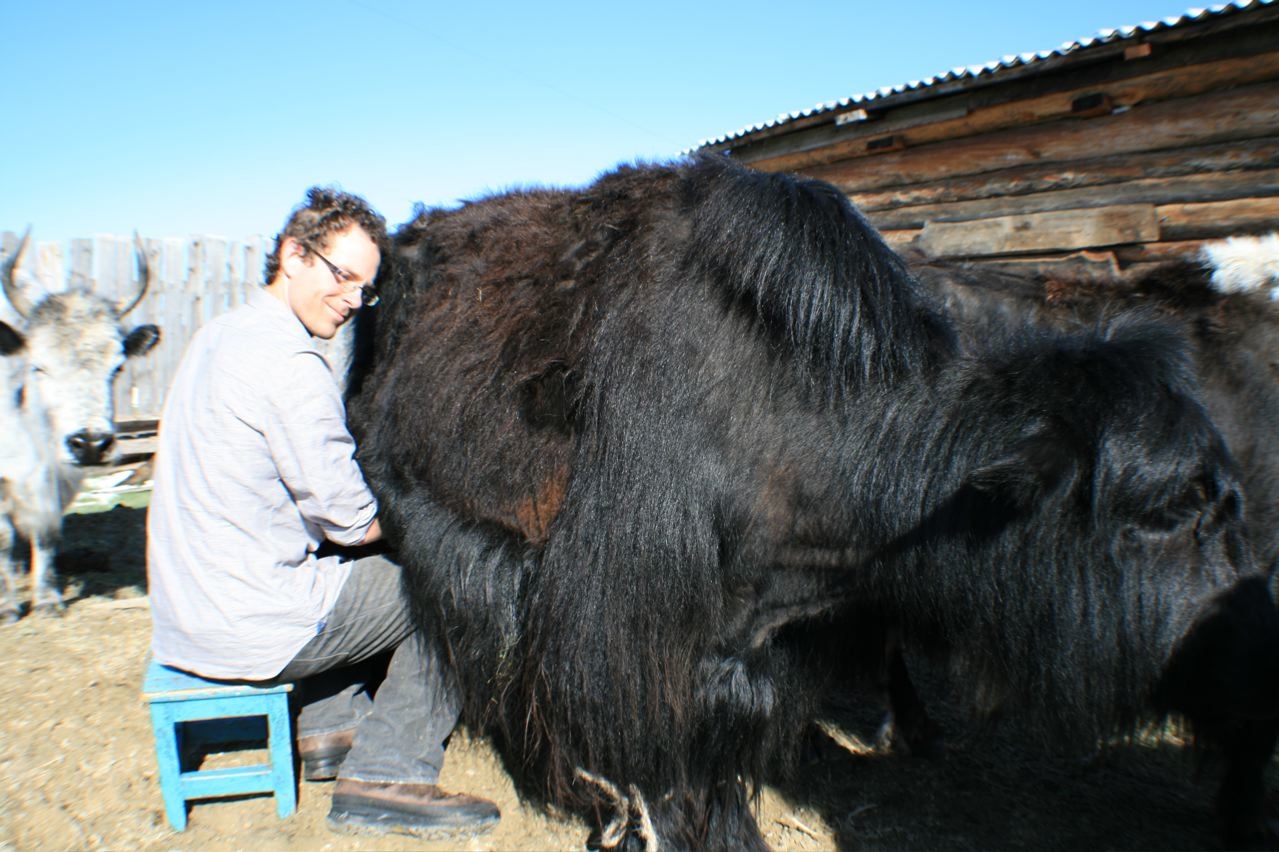 |
CLIMATE CHANGE: The Big Thaw Reaches Mongolia's Pristine North John Bohannon Science 1 February 2008, p. 567-568 LAKE HOVSGOL, MONGOLIA--As warmer temperatures affect plants, animals, and human society, researchers ask whether ecological changes can be reversed. |
||
| EPIDEMIOLOGY: Calculating Iraq's Death Toll: WHO Study Backs Lower Estimate John Bohannon Science 18 January 2008, p. 273 A new estimate of the number of Iraqis who died violently in the first 40 months following the U.S.-led invasion--between 104,000 and 223,000--hews close to some other attempts to quantify the toll but comes in far below a controversial 2006 estimate of 600,000 violent deaths during the same period. |
|||
The Gonzo Scientist The Gonzonaut Goes to Mars |
|||
 |
|||
| The Freeing of the Tripoli Six Discover Magazine, November 2007 by John Bohannon The inside story of how scientists saved medical workers from a Libyan firing squad. |
|||
| MICHAEL WALKER: Seeking Nature's Inner Compass John Bohannon Science 9 November 2007: p. 904 - 907 AUCKLAND, NEW ZEALAND--Michael Walker has navigated cultures and courted controversy in his quest to prove that life forms possess a single organ for perceiving magnetic fields: a sensor based on magnetite. |
|||
| The Genoa Festival of Science: Celebrating Food, Feces, and 3 Billion Years of Evolution By John Bohannon ScienceNOW 7 November 2007 |
|||
The Gonzo Scientist Happy 300th Birthday, Linnaeus |
|||
| ASTRONOMY: Tooled-Up Amateurs Are Joining Forces With the Professionals John Bohannon Science 12 October 2007: p. 192 - 193 BARCELONA, SPAIN--Hobbyists who love the night sky are finding that their skills, and telescopes, are in demand with academic astronomers. |
|||
The Gonzo Scientist A Summer Camp for Grown-Up Geeks |
|||
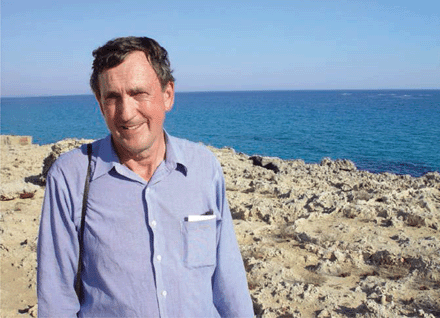 |
PROFILE: ALBERT AMMERMAN Exploring the Prehistory of Europe, in a Few Bold Leaps John Bohannon Science 13 July 2007: p. 188 - 189 Nissi Bay, Cyprus--Archaeology’s Renaissance man, Albert Ammerman, takes a new plunge--into the topic that made him leave a life of literature for a "$10-a-day" life. |
||
| SPECIAL ISSUE: UNDERGRADUATE EDUCATION 'Can't Have a Career Without English' 'A Crisis in Student Quantity and Quality' |
|||
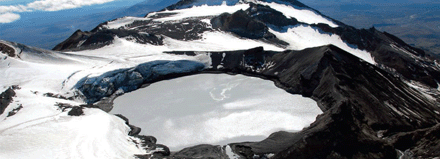 |
GEOPHYSICS: Stalking a Volcanic Torrent John Bohannon Science 15 June 2007: p. 1562 - 1563 MOUNT RUAPEHU, NEW ZEALAND--The setting of the climax of the Lord of the Rings, New Zealand's Mount Ruapehu, is earning a second reputation as a laboratory for understanding killer mudslides. |
||
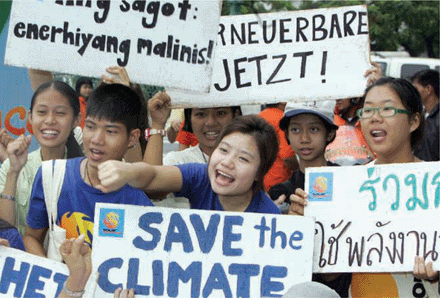 |
CLIMATE CHANGE: IPCC Report Lays Out Options for Taming Greenhouse Gases John Bohannon Science 11 May 2007: p. 812 - 814 BANGKOK--Reining in climate change won't bankrupt the world economy and won't require technological miracles, but we'll have to start soon, concludes Working Group III of the Intergovernmental Panel on Climate Change (IPCC). |
||
| BIG FACILITIES: Researchers Get in Synch Down Under John Bohannon Science 27 April 2007: p. 531 MELBOURNE--Last week, the state of Victoria unveiled the $170 million Australian Synchrotron--the nation's first--set to come online in July. |
|||
| DANCE: From the Big Bang to the Mind John Bohannon Science 13 April 2007: p. 203 BARCELONA--The latest choreography by Cesc Gelabert, created in collaboration with neuroscientist Óscar Vilarroya, is structured around the emergences of matter, life, and consciousness. Bohannon reviews. |
|||
 |
PUBLIC HEALTH: Hard Data on Hard Drugs, Grabbed From the Environment John Bohannon Science 6 April 2007: p. 42-44 BARCELONA--Scientists are looking for drugs, but instead of interrogating people, they're turning to the environment. Fieldwork in this new and fast-growing area of epidemiology requires wads of cash and a familiarity with sewer lines. |
||
| METAGENOMICS: Ocean Study Yields a Tidal Wave of Microbial DNA John Bohannon Science 16 March 2007: p. 1486-1487 After relishing the role of David to the Human Genome Project's Goliath, J. Craig Venter is now positioning himself as a Charles Darwin of the 21st century. |
|||
| Sailing the Southern Sea John Bohannon Science 16 March 2007: p. 1520-1521 An international project aims to sort out the dynamics of climate and nutrient fluxes in this polar ocean community. |
|||
| MATHEMATICS: Quasi-Crystal Conundrum Opens a Tiling Can of Worms John Bohannon Science 23 February 2007: p. 1066 In this week's issue of Science, physicists propose that sometime between the 13th and 15th centuries, Islamic architects created mosaic patterns that conform almost exactly to a pattern called a quasi-crystal--500 years before it was formally described in the West. But controversy is also brewing over how to interpret the patterns, and who first spotted their significance. |
|||
| Special Issue: Sustainability and Energy Science 9 February 2007 TARIQ RAUF PROFILE: Treading the Nuclear Fuel Cycle Minefield VIENNA--Tariq Rauf has the unenviable job of making the International Atomic Energy Agency's international fuel bank work. And the clock is ticking. From Greener Production to Carbon Trading: Sustainable Energy Careers WEST JERUSALEM--At the Israeli environmental consulting firm Assif Strategies, Elisheva White identifies potential carbon-trading projects. Photovoltaics in Focus NEGEV DESERT--Instead of spreading photovoltaic cells wide to catch the sun, physicist David Faiman uses them sparingly but concentrates the sunlight with huge mirrors, boosting efficiency. Science 23 February 2007 315: 1066 |
|||
| MUSIC: Riffs on Numerical Themes John Bohannon Science 26 January 2007: p. 462-463 Rudresh Mahanthappa performs jazz music based on number theory. Bohannon reviews. |
|||
| ARCHAEOLOGY: Researchers Helpless as Bosnian Pyramid Bandwagon Gathers Pace John Bohannon Science 22 December 2006: p. 1862 LONDON--Last week, the European Association of Archaeologists published an open letter to the Bosnian government calling Semir Osmanagiç's alleged discovery of 12,000-year-old pyramids in Bosnia "a cruel hoax on an unsuspecting public [which] has no place in the world of genuine science." But Osmanagiç's influence and popularity have only grown. |
|||
| GLOBAL WARMING: U.N. Conference Puts Spotlight on Reducing Impact of Climate Change Richard Stone and John Bohannon Science 24 November 2006: p. 1224 - 1225 NAIROBI--Here at the annual U.N. conference of nations that have ratified the Kyoto Protocol, delegates fleshed out an Adaptation Fund that will funnel assistance to developing countries that bear the brunt of climate change. But disagreement over who will control the money will delay implementation until next year's meeting at the earliest. |
|||
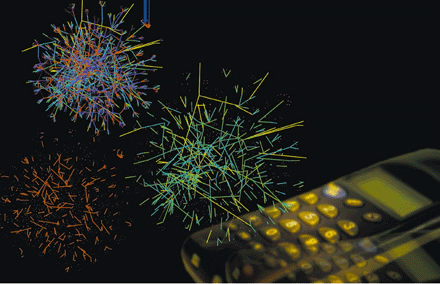 |
SOCIAL SCIENCE: Tracking People's Electronic Footprints John Bohannon Science 10 November 2006: p. 914-916 OXFORD--Digital records, faster computers, and a growing tool kit of mathematical models are now giving social scientists a boost in analytical power. Bohannon also talks with officials at Google. The search engine data are a potential social science gold mine. The company has kept quiet about academic research collaborations, until now. |
||
| HUMAN RIGHTS: Scientists Urge Libya to Free Medics John Bohannon Science 27 October 2006: p. 581 In a letter published online this week by Science, U.S. scientists are adding their voices to mounting international pressure on Libya to release six foreign medical workers who could face execution within weeks. |
|||
| EPIDEMIOLOGY: Iraqi Death Estimates Called Too High; Methods Faulted John Bohannon Science 20 October 2006: p. 396 - 397 A new estimate of the number of Iraqis who have died as a consequence of the U.S.-led invasion in March 2003 has ignited a firestorm of its own. At 400,000 to 800,000 deaths, the new number is at least 10 times higher than estimates cited by the Iraqi government and U.S.-led coalition. See also: |
|||
| BRIAN O'NEILL PROFILE: Trying to Lasso Climate Uncertainty John Bohannon Science 13 October 2006: p. 243 - 244
|
|||
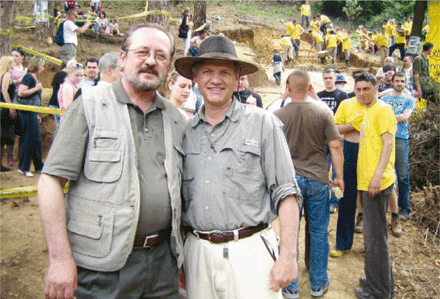 |
Mad About Pyramids John Bohannon Science 22 September 2006: p. 1718 - 1720 SARAJEVO--With the violent 1990s behind them, archaeologists in Bosnia hoped they would receive more support for academic research; instead, they are being pushed aside by amateurs. |
||
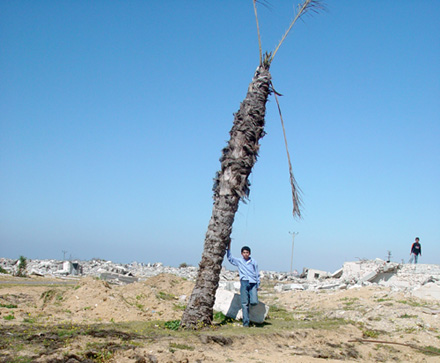 |
Running Out of Water--and Time John Bohannon Science 25 August 2006: p. 1085 - 1087 RAFAH--Geography, politics, and war combine to make the Gaza Strip a worst-case scenario for water-resource planners. THIS ARTICLE WON the 2006 Reuters-IUCN Media Award for Excellence in Environmental Reporting in Europe |
||
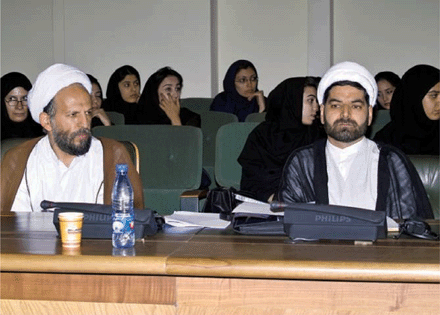 |
SCIENCE IN IRAN: Picking a Path Among the Fatwas John Bohannon Science 21 July 2006: p. 292 - 293 TEHRAN--Scientists in Iran find themselves challenged by true believers; some are trying to negotiate a peaceful compromise. |
||
|
ISRAEL-PALESTINE SCIENCE: Bridging the Divide in the Holy Land Palestinian Archaeology Braces for a Storm Breaking Up Bomb Plots--and Habitats? |
|||
 |
|||
| JUST CHECK IT! Toxicology comes to rave parties in Vienna John Bohannon The Scientist, 5 December 2005, p. 56 VIENNA--If you can't beat them, join them. A group of Austrian scientists and health workers are setting up laboratory booths at massive rave parties. What do they offer? Free chemical analysis of your drugs. What's the cost? Nothing. |
|||
 |
|||
| Families Reunited
John Bohannon Oxford Today, Vol. 18 No. 1, Michaelmas 2005 A revolution is underway at Oxford University's Botanic Gardens, with art and science colliding in celebration of the new genetics. John Bohannon takes a stroll through millions of years of evolution expressed in garden form. |
|||
| ARATA KOCHI PROFILE: Fighting Words From WHO's New Malaria Chief John Bohannon Science 11 November 2005: p. 962-963 Just months into his new job, Arata Kochi is battling big pharma on drug resistance. Bold words from a normally meek WHO. |
|||
| SUSAN GREENFIELD PROFILE The Baroness and the Brain John Bohannon Science 11 November 2005: p. 962-963 OXFORD--Best known for her popular writing, neuroscientist Susan Greenfield has launched a new center at Oxford to investigate consciousness. |
|||
| BUILDING SAFETY: Directing the Herd: Crowds and the Science of Evacuation John Bohannon Science 14 October 2005: p. 219-221 VIENNA--No skyscrapers are designed to be able to disgorge all their occupants in a dire emergency like the attack on the World Trade Center towers. Can they be made safer? |
|||
| AFTER KATRINA: Katrina Leaves Behind a Pile of Scientific Questions John Bohannon Science 23 September 2005: p. 1981 Amid the cleanup in Katrina's wake, scientists are rushing into the field to gather data before they disappear. |
|||
| VENICE: A Sinking City Yields Some Secrets John Bohannon Science 23 September 2005: p. 1978-1980 VENICE--Like New Orleans, Venice is slowly subsiding. Several decades and $10 billion of research have not settled the debate over what to do about the "Venice problem," but studies of the city's famed lagoon are providing insights for other coastal cities on pollution and climate change. |
|||
| HURRICANE KATRINA: Scientists Weigh Options for Rebuilding New Orleans John Bohannon and Martin Enserink Science 16 September 2005; 309: 1808-1809 As experts ponder how best to rebuild the devastated city, one question is whether to wall off--or work with--the water. |
|||
| NUCLEAR MEDICINE: Panel Puts Eventual Chornobyl Death Toll in Thousands John Bohannon Science 9 September 2005: p. 1663 VIENNA--A study released this week predicts that 4000 people or even more will die from cancers caused by the 1986 Chornobyl nuclear accident, a figure that dwarfs the 50 known deaths linked to the disaster so far. |
|||
| NANOMATERIALS: 'Smart Coatings' Research Shows The Virtues of Superficiality John Bohannon Science 15 July 2005; 309: 376-377 BERLIN--Thin, shallow, and out to strike it rich: High-tech protective paints and varnishes look poised to become the first "killer apps" for nanotechnology, boasting abilities ranging from corrosion resistance to fire prevention. |
|||
| DANCE REVIEW: Constant Speed John Bohannon Science 1 July 2005: p. 59 LONDON--To celebrate the centennial of Einstein's most productive year of work, the young choreographer Mark Baldwin was commissioned to interpret the revolutionary's scientific theories in dance form. Breath of fresh air or embarrassing flop? John Bohannon reviews. |
|||
| MARINE BIOLOGY: Microbe May Push Photosynthesis Into Deep Water Science 24 June 2005; 308: 1855 John Bohannon The announcement this week of a bacterium that appears to derive energy from light despite living in the inky depths of an ocean threatens to overthrow the dogma that photosynthesis depends on the sun. |
|||
|
|||
 |
SCIENCE IN LIBYA From Pariah to Science Powerhouse? John Bohannon Science 8 April 2005, p. 182-185 TRIPOLI--Libya's longtime leader Muammar Gaddafi is inviting outsiders to help turn his country into a "northern star" of science and technology in Africa. The first tangible features of this vision, including a new disease research center and astronomical observatory, are under construction. Western scientists are being invited to come work in the one-time pariah state. But the imminent execution of a group of foreign medics casts serious doubt on Libya's ambition to come in from the cold. |
||
 |
|||
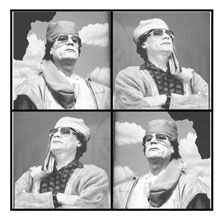 |
When Things Go Wrong in Libya John Bohannon Oxonian Review of Books 30 March 2005 TRIPOLI--With international sanctions now fully lifted, tourists are flocking to Libya. But meanwhile, six foreign medics are waiting to be executed by a Libyan firing squad for a crime they almost certainly did not commit. John Bohannon examines the two faces of Libya: a tourist haven extolled by the Lonely Planet guide, and a human rights catastrophe detailed by Amnesty International. |
||
 |
|||
 |
In the Valley of Life, oil is death to the art of a lost civilisation John Bohannon The Guardian 10 February 2005 WADI AL-AJAL, LIBYA--In a race against time, laser-toting British archaeologists are trekking deep into the Sahara to document the remains of a prehistoric civilisation threatened by oil-prospecting. Link to the Guardian article online: HERE |
||
 |
The best food I've tasted - but never seen John Bohannon Christian Science Monitor 13 October 2004 BERLIN--Diners at Unsicht-Bar are served by blind waiters in complete darkness. John Bohannon investigates the restaurant's appeal. |
||
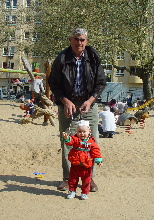 |
Eugenics stir emotions in Germany John Bohannon Christian Science Monitor 22 July 2004 BERLIN--Discussion of any type of genetic engineering is particularly sensitive given their country's Nazi past, but Germans are pushing for legal changes that, critics fear, could allow the creation of designer babies. |
||
 |
Einstein's Refuge John Bohannon Science 11 February 2005; 307: 853 BERLIN--Einstein spent the last carefree years of his life in a summer home he had built in Caputh, along the lakes southwest of Berlin. After that final summer in 1932 came the Third Reich, Princeton, the death of his wife, and the creation of the atomic bomb. John Bohannon visits the newly renovated house and finds it rife with history. |
||
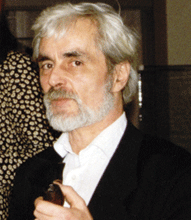 |
RICHARD VILLEMS PROFILE: Cutting a Path in Genetics and International Diplomacy John Bohannon Science 17 December 2004; 306: 2030-2031 TARTU, ESTONIA--The newly elected president of the Estonian Academy of Sciences has long been a scientist-diplomat, first in dealings with the Soviet Union, now with the European Union. |
||
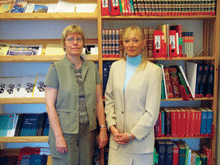 |
THE REHABILITATION AND RESEARCH CENTER FOR TORTURE VICTIMS PROFILE: Laying Abominable Ghosts to Rest John Bohannon Science 18 June 2004; 304: 1735-1736 COPENHAGEN--Using new techniques and an abundance of empathy, a pioneering center in Denmark is setting standards for how to heal the wounds, physical and emotional, of torture victims. |
||
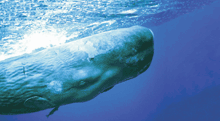 |
ROGER PAYNE PROFILE: A Toxic Odyssey John Bohannon Science 11 June 2004; 304: 1584-1586 THE INDIAN OCEAN, 2°N, 72°E--Roger Payne's discovery of whale song helped make the animals icons of conservation; now he's helping turn them into symbols of how humans are poisoning the oceans |
||
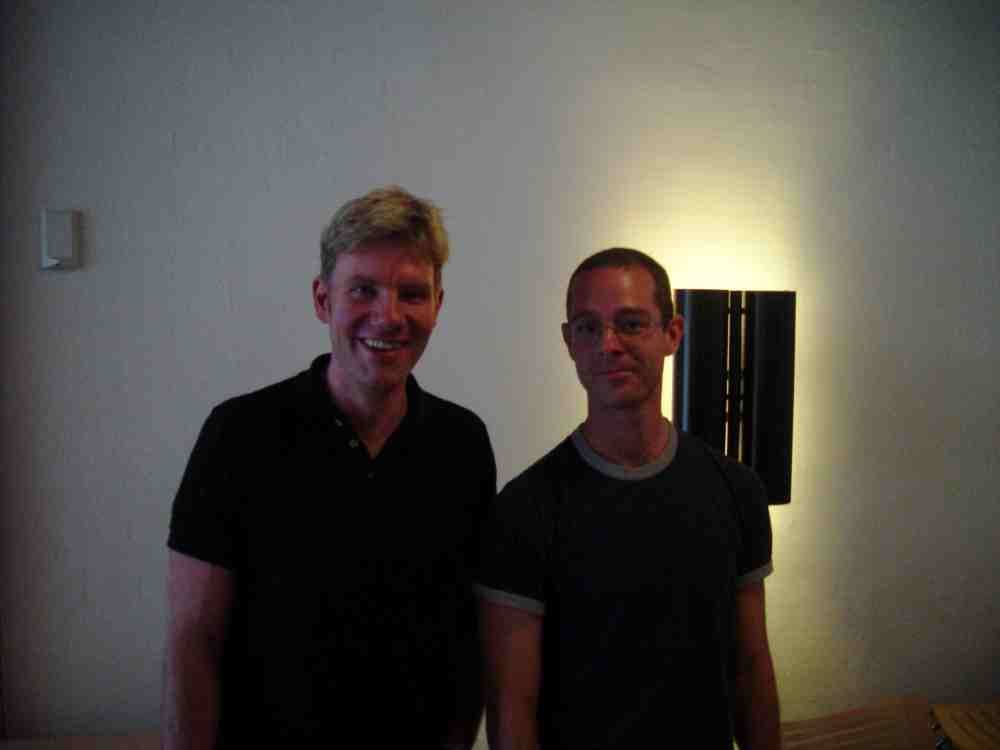 |
DEVELOPMENT SPENDING: Economists Rate Greenhouse Gas Curbs a Poor Investment John Bohannon Science 4 June 2004; 304: 1429 COPENHAGEN--Investing in measures to rein in global warming is a waste of tax money, according to a varied group of economists, including three Nobel laureates, that met here last week to analyze spending on global problems. |
||
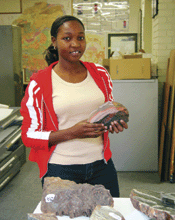 |
10 YEARS AFTER APARTHEID: Earth Sciences Seek Niche Apart From Mining Industry John Bohannon Science 16 April 2004; 304: 380-381 CAPE TOWN, SOUTH AFRICA--Powerful mining interests have long set the agenda for South African earth sciences. But perhaps not for much longer. |
||
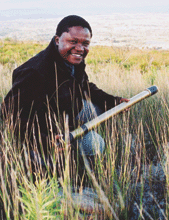 |
10 YEARS AFTER APARTHEID: South Africa's Own Shooting Star John Bohannon Science 16 April 2004; 304: 379 CAPE TOWN, SOUTH AFRICA--Astronomer Thebe Medupe has taken on a mission: to attract black students into his field. |
||
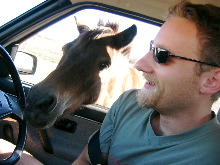 |
10 YEARS AFTER APARTHEID: New South Africa Puts Emphasis on Reclaiming Humanity's Past John Bohannon Science 16 April 2004; 304: 377-378 ELANDS BAY, SOUTH AFRICA--Some of the world's most famous archaeological sites are to be found in South Africa, but so far few blacks have entered the field. |
||
 |
FRENCH RESEARCH: One-Two Punch Leaves Physicists Gasping for Breath John Bohannon and Barbara Casassus Science 28 November 2003; 302: 1484 PARIS--Scientists in France are reeling from the news that one of the country's largest research institutions, the Commission for Atomic Energy, intends to pull out of two major physics facilities. |
||
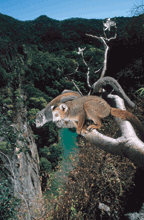 |
STEVE GOODMAN PROFILE: Madagascar Tames the Bohemian of Biology John Bohannon Science 26 September 2003; 301: 1835-1837 ANKARAFANTSIKA NATIONAL PARK, MADAGASCAR--After a career that makes him sound like a biological Indiana Jones, Steve Goodman may have settled down, but he is still fighting to save this island's unique wildlife. |
||
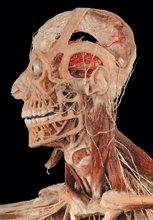 |
GUNTHER VON HAGENS PROFILE: Anatomy's Full Monty John Bohannon Science 29 August 2003; 301: 1172-1175 DALIAN, CHINA--Gunther von Hagens developed a way to preserve tissue by replacing fluids with polymers. His "plastinated" body exhibits are drawing vast crowds. Is he the savior of anatomy, the "Disney of Death," or both? |
||
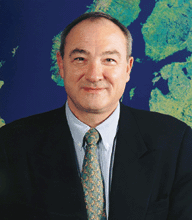 |
JEAN-JACQUES DORDAIN PROFILE: Applying Himself to the Business of Space John Bohannon Science 8 August 2003; 301: 759 PARIS--Far from being a threat to science, applied projects will be its savior, insists the new business-minded chief of the European Space Agency. |
||
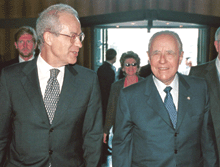 |
ITALIAN SCIENCE: Industrial Renaissance or a New Dark Age? John Bohannon and Alexander Hellemans Science 30 May 2003; 300: 1354-1355 NAPLES--Italy's scientific community is in an uproar over long-dreaded reforms just unveiled by the government. The country's top science official and another key figure have resigned, while rank-and-file researchers are bemoaning a shakeup that could mark a dramatic turn toward applied projects. |
||
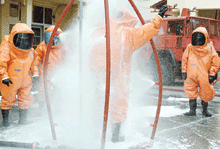 |
ANTHRAX: From Bioweapons Backwater to Main Attraction John Bohannon Science 18 April 2003; 300: 414-415 NICE--The anthrax research community has got together for the first time in 2 years, and they find themselves in a new field. The 2001 anthrax attacks in the United States have prompted a flood of new money into labs focusing on the causative agent, Bacillus anthracis. |
||
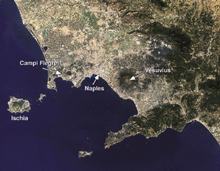 |
Living in the Shadow of Vesuvius John Bohannon Science 28 March 2003; 299: 2020 NAPLES--Scientists at the oldest volcanological institute are keeping a tense vigil at Italy's Mount Vesuvius, which could threaten hundreds of thousands of people near its base if it were to awaken, and wrestling with the politics of civil protection. |
||
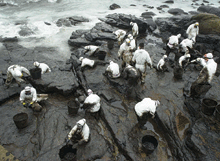 |
SCIENTIFIC ADVICE: Spanish Researchers Vent Anger Over Handling of Oil Spill John Bohannon and Xavier Bosch Science 24 January 2003; 299: 490 BARCELONA--Ever since the oil tanker Prestige sank in deep water off the Iberian coast on 19 November 2002, the Spanish government has been under fire for its handling of the accident. Now, in a letter on page 511, 422 marine and atmospheric scientists accuse the government of largely ignoring the scientific community in the aftermath of the spill. |
||
 |
ANIMAL MODELS: Can a Mouse Be Standardized? John Bohannon Science 20 December 2002; 298: 2320-2321 OXFORD, U.K.--With new generations of mutant mice on the horizon, some researchers question the meaningfulness of standard behavioral tests and the wisdom of minimizing the mouse environment. There's accumulating evidence that the typical living conditions of lab mice might induce odd behaviors, from the subtle to the profound, that might obscure genetically based differences. The result: The same experiment can have different outcomes in different labs. |
||
 |
MEDICAL RESEARCH: U.K. Researchers Hope for Clarity in Tissue Use John Bohannon Science 6 December 2002; 298: 1867-1869 CAMBRIDGE, U.K.--British medical researchers are facing major changes in the rules governing the scientific use of human tissues, the result of a series of scandals in the 1990s. Earlier this year, the U.K. government said it was considering drafting a law to prevent misuse of tissues. Bioethics committees have already tightened access to human tissues drastically, however, causing some projects to grind to a halt. |
||
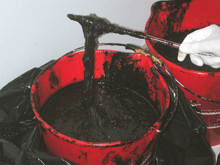 |
MARINE ECOLOGY: Scientists Brace for Bad Tidings After Spill John Bohannon, Xavier Bosch, and and Jay Withgott Science 29 November 2002; 298: 1695 VIGO, SPAIN--A week ago, the hull of the tanker Prestige tore open and began disgorging a cargo of fuel oil off the Spanish coast; then on 19 November, fearsome, wind-whipped waves overwhelmed the stricken tanker, which ripped in half and sank. So far, 10,000 tons of oil are known to have leaked. The challenge for scientists is to predict what will happen to another 67,000 tons that went down with the ship and how it might harm life on the seabed. |
||
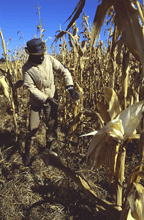 |
FOOD AID: Zambia Rejects GM Corn on Scientists' Advice John Bohannon Science 8 November 2002; 298: 1153-1154 CAMBRIDGE, U.K.--The government of Zambia last week rejected thousands of tons of corn donated by the United States because it is likely to contain genetically modified (GM) kernels, leaving an estimated 2.9 million people at risk of starvation. A delegation of Zambian scientists and economists had urged the government to reject the corn on the basis of the "precautionary principle" because studies of the health risks of GM foods "are inconclusive." |
||
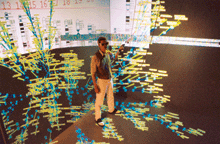 |
BIOINFORMATICS: The Human Genome in 3D, at Your Fingertips John Bohannon Science 25 October 2002; 298: 737 AMSTERDAM--Even the most seasoned experts are daunted by the mountains of human genome data churned out by sequencing and microarray technologies. Now swishing through thickets of genes with a "light saber" in a virtual-reality room called Saragene could become a straightforward--and fun--way to make sense of the flood of genome data. The system could become available widely within a year. |
||
 |
IAN REDMOND PROFILE: An 11th-Hour Rescue for Great Apes? John Bohannon Science 27 September 2002; 297: 2203 LONDON--Globetrotting conservation biologist Ian Redmond is spearheading a last-ditch effort to save embattled primate species from extinction--the United Nations Great Apes Survival Project (GRASP)--but the clock is ticking. The hope is that GRASP will succeed in protecting apes where others have failed because of its scope and credibility as an international partnership. |
||
 |
UNITED NATIONS: Bush Brings U.S. Back to UNESCO John Bohannon Science 20 September 2002; 297: 1976 President George W. Bush announced to the United Nations General Assembly last week that the United States will rejoin the U.N. Educational, Scientific, and Cultural Organization (UNESCO) after an 18-year absence. The announcement made few headlines, but at UNESCO headquarters in Paris it's the best news in years. |
||


